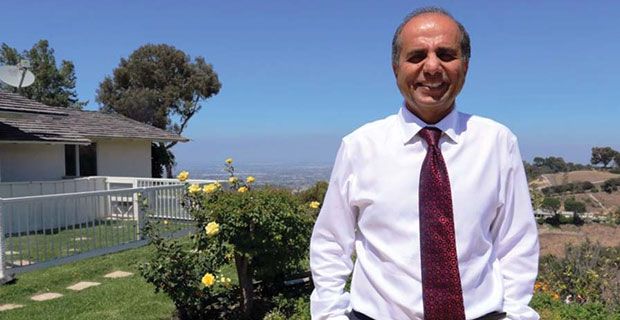Life of an Adventurer
Jaipur-born Arun Bhumitra lost his father when ...
CALIFORNIA CALLING
In 1980 he was able to make a move to the West Coast when Northrop recruited him for a job in California. At the firm he designed tools for making parts for the F-18 fighter bomber. Simultaneously he also joined the University of California at Los Angeles as an associate professor where he taught tool engineering. But as defense spending in the USA began to decline because the Cold War was palpably thawing up, Arun knew that his students would find it difficult to get jobs in defense-related sectors. He, therefore, gave up his teaching assignment.
In the mid 1980’s, even though they were not making waves, cellular phones were just about knocking on the American consciousness. His business instincts kicked in, and Arun decided to be a part of the cellular phone industry where he saw a great future. Arun opened a cellular phone store in 1987, but joined Motorola at Fullerton for the 7:00 a.m. to 1:00 p.m. shift to learn more about the business, while continuing to be on the 3:00 p.m. to 11:00 p.m. shift at Northrop where he supervised 45 engineers. At one point the thought of manufacturing cell phones crossed his mind, but he realized quickly enough that it would require a very heavy investment.
He did the next best thing, joining LA Cellular as a dealer. The man who had started out on the docks in Bombay in the marine industry, worked in aerospace in Long Island and in the defense market in California, was now switching sectors again. In 1988, he gave up his jobs and became a full-time dealer. Those days cell phones resembled small books and lacked compactness, and they cost anywhere in the region of 4,000 USD each. Even though Arun was making 1,500 USD per sale, there were few takers for the product, and it wasn’t smooth sailing. He would make cold calls all over Southern California but the people he spoke to would ask him what value would be added to their lives by having a cell phone. For five years, Arun and his brother Maxy, who is New York-based, struggled with the business. There were issues with cell towers, signal strength, and hilly terrain where receptivity remained poor. His main customers, he realized, were doctors and lawyers. So one day on the advice of a vice president at LA Cellular, he decided to focus on the South Bay area which had plenty of doctors and attorneys. Things began to turnaround in 1993 when coverage started to improve and the sizes of cellular phones became more compact.











Comments.